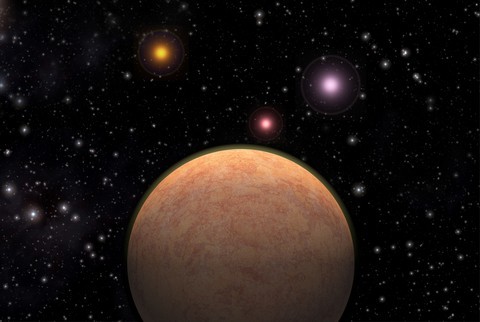Many planets outside of our solar system are not observable in the visible wavelength spectrum. Often times astronomers use various forms of mathematical and predictive modeling to locate them.
This is a brief intro to one of the processes:
They are discovered when they transit in front of their host star. That’s how the Kepler mission finds exoplanets. After that, their properties are inferred by their gravitational interactions with their star and with any other planets in their system. We can infer a lot, and get quite detailed, but studying planets with spectroscopy is a whole other ball game.
And check out this fascinating video on the strange moving group Beta Pictoris.
thanks to universetoday.com for the great info
Pages: 1 2

How? Gravitational slingshot I spose.
Is this the planet that stil hasn’t made its complete orbit yet?
Maybe the sun didn’t have enough gravitational pull